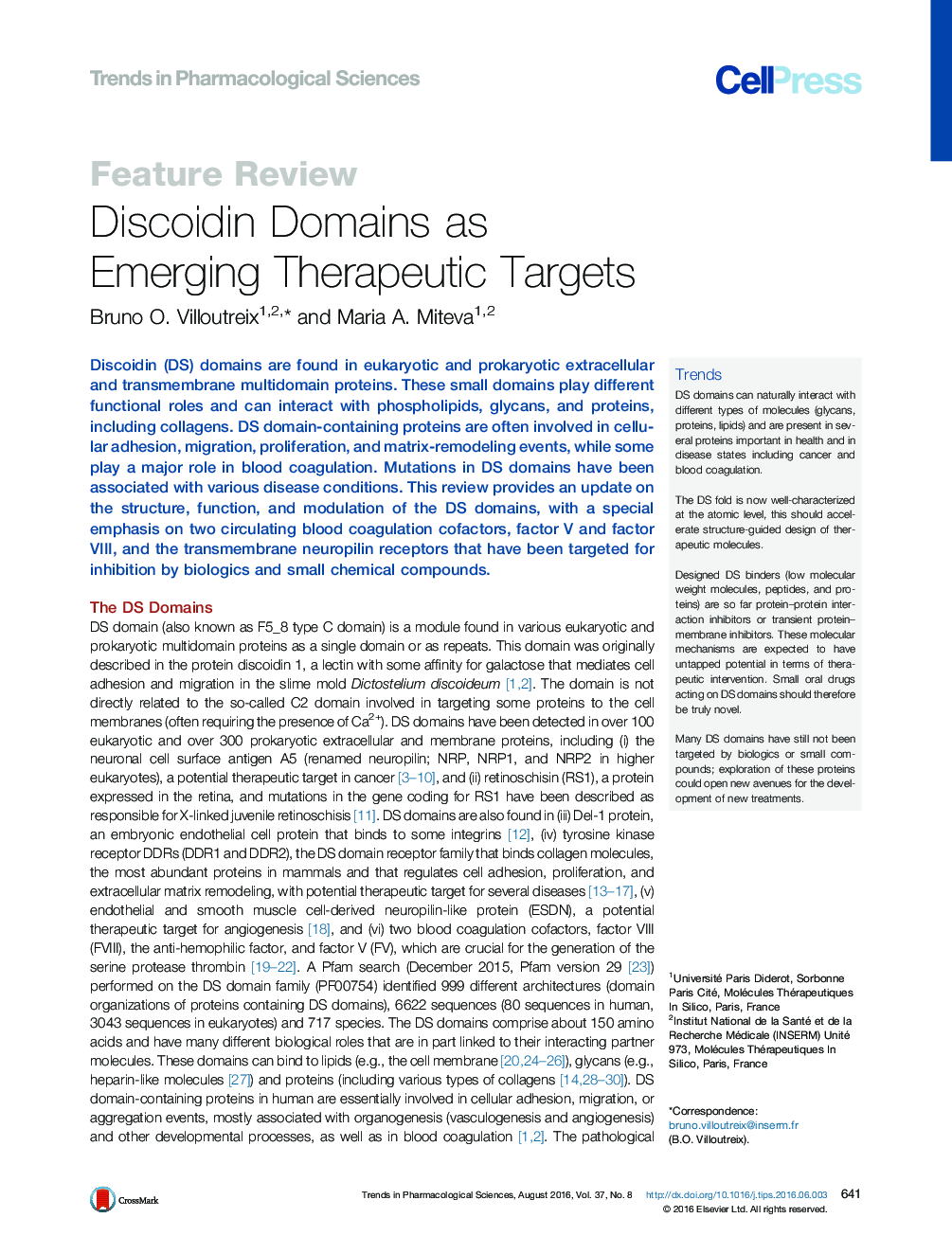| کد مقاله | کد نشریه | سال انتشار | مقاله انگلیسی | نسخه تمام متن |
|---|---|---|---|---|
| 2572399 | 1129292 | 2016 | 19 صفحه PDF | دانلود رایگان |
Discoidin (DS) domains are found in eukaryotic and prokaryotic extracellular and transmembrane multidomain proteins. These small domains play different functional roles and can interact with phospholipids, glycans, and proteins, including collagens. DS domain-containing proteins are often involved in cellular adhesion, migration, proliferation, and matrix-remodeling events, while some play a major role in blood coagulation. Mutations in DS domains have been associated with various disease conditions. This review provides an update on the structure, function, and modulation of the DS domains, with a special emphasis on two circulating blood coagulation cofactors, factor V and factor VIII, and the transmembrane neuropilin receptors that have been targeted for inhibition by biologics and small chemical compounds.
TrendsDS domains can naturally interact with different types of molecules (glycans, proteins, lipids) and are present in several proteins important in health and in disease states including cancer and blood coagulation.The DS fold is now well-characterized at the atomic level, this should accelerate structure-guided design of therapeutic molecules.Designed DS binders (low molecular weight molecules, peptides, and proteins) are so far protein–protein interaction inhibitors or transient protein–membrane inhibitors. These molecular mechanisms are expected to have untapped potential in terms of therapeutic intervention. Small oral drugs acting on DS domains should therefore be truly novel.Many DS domains have still not been targeted by biologics or small compounds; exploration of these proteins could open new avenues for the development of new treatments.
Journal: - Volume 37, Issue 8, August 2016, Pages 641–659
